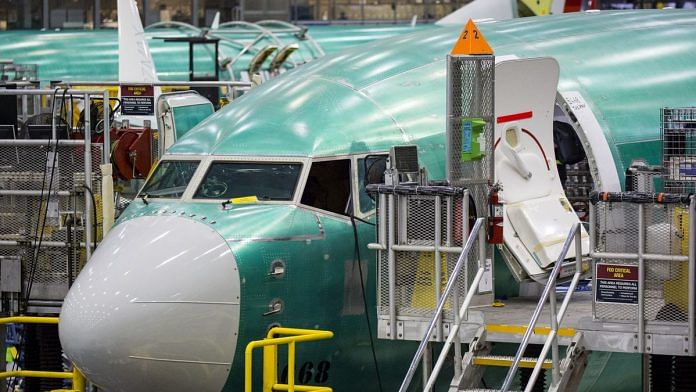Chicago/ Dallas: Boeing Co. acknowledged that a cockpit alert notifying pilots of a sensor malfunction linked to two fatal accidents wasn’t working as represented on every 737 Max.
The planemaker said it didn’t purposefully deactivate a warning meant to show if two angle-of-attack vanes provided conflicting data to aircraft flight computers. But the alert only functioned if operators purchased a separate optional indicator, Boeing said in a statement Monday.
“The disagree alert was intended to be a standard, stand-alone feature on Max airplanes,” the company said. “However, the disagree alert was not operable on all airplanes because the feature was not activated as intended.”
The disclosure adds a new mystery about the design of Boeing’s best-selling jet, which has been grounded since shortly after an Ethiopian Airlines 737 Max 8 crashed March 10 — the second disaster in five months. Boeing is working to convince airlines and regulators that the Max will be safe once an update is installed to so-called MCAS software, which played a role in both accidents after being activated by erroneous angle-of-attack data from a single sensor.
Southwest Airlines Co., the largest Max operator, said it first learned from Boeing about the problem with the disagree alert after a Lion Air 737 Max crashed off the coast of Indonesia in October.
Until then, the largest 737 operator had thought the warning sign was standard on every Max, as it had been on the previous 737 NG models. The alert was mentioned in pilot manuals and Boeing materials circulated before the latest version of the single-aisle family entered the commercial market almost two years ago.
Also read: Boeing told Southwest after Lion crash that 737 Max lacked a key warning
Flawed Manual
“The manual documentation presented by Boeing at Max entry into service indicated the AOA disagree light functioned on the aircraft, similar to how it works on our NG series,” Southwest spokeswoman Brandy King said in an email Sunday, referring to the equipment by its acronym.
As part of a planned software update, Boeing will activate the alert on Max rolling out of its factory, and retrofit planes in the field for no additional charge, Boeing Chief Executive Officer Dennis Muilenburg said during a press conference Monday. “The AOA disagree signal in the cockpit is not something that drives pilot actions,” he added.
All information needed to safely operate the plane is provided in the flight deck and flight-deck display, he said. That includes air speed, aircraft attitude and altitude displays, as well as an audible and physical alarm known as a stick-shaker.
At Southwest, pilots aren’t trained to use angle-of-attack information routinely because they don’t use it to fly, said Jon Weaks, the head of the carrier’s aviators union. The AOA vanes measure the tilt of an aircraft against onrushing wind.
In both 737 Max crashes, the jet’s Maneuvering Characteristics Augmentation System misfired and repeatedly pressed the nose of the planes down until flight crews lost control. All told, the accidents killed 346 people. – Bloomberg
Also read: No one knows when 737 Max will take flight again, not even Boeing



